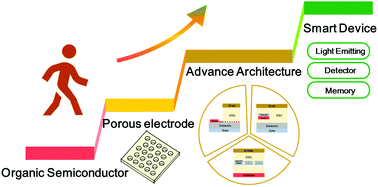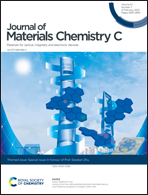Vertical organic transistors with short channels for multifunctional optoelectronic devices
Abstract
Organic semiconductors are functional (macro)molecules with tunable physical properties that can be processed as mechanically flexible films over large areas via printing and other solution-based casting methods. Their unique characteristics make them ideal active components for the fabrication of novel flexible, low-power, ultra-light and high-performance devices such as displays, memories and sensors. Compared with planar field-effect transistors, vertical transistors emerged as a cheap and up-scalable solution for the fabrication of devices with nanoscale-sized active channels. The latter offers access to higher current densities at low operating voltages and thus to transition frequencies higher than planar organic transistors. As a result, the vertical organic transistor (VOT) design represents an ideal platform for applications requiring fast operating speeds with reduced power consumption, such as phototransistors and light-emitting devices. In fact, the future development of inexpensive and wearable smart devices depends on the ability to fabricate devices that can operate at low voltages as fast switching units while keeping size and manufacturing costs as low as possible. In this Perspective, we examine the most enlightening works on the development of multifunctional VOTs reported during the last decade and we discuss the challenges and opportunities to expand these strategies towards the technological implementation of VOTs in the next generation of opto-electronics and photonics technologies.

- This article is part of the themed collection: Special issue in honour of Daoben Zhu


 Please wait while we load your content...
Please wait while we load your content...